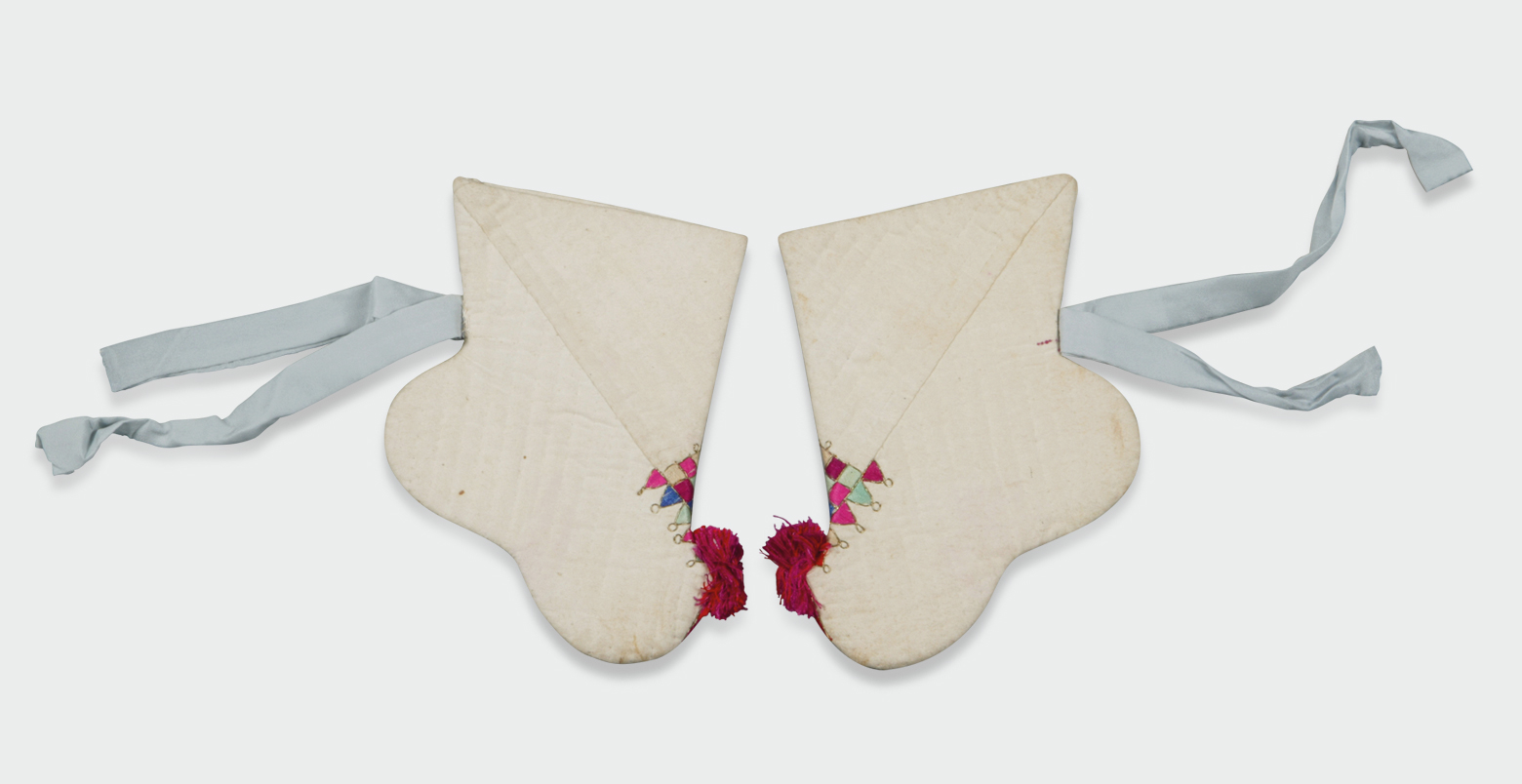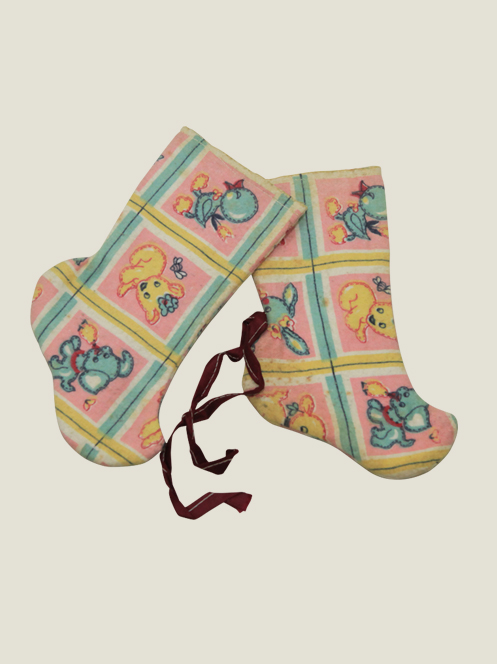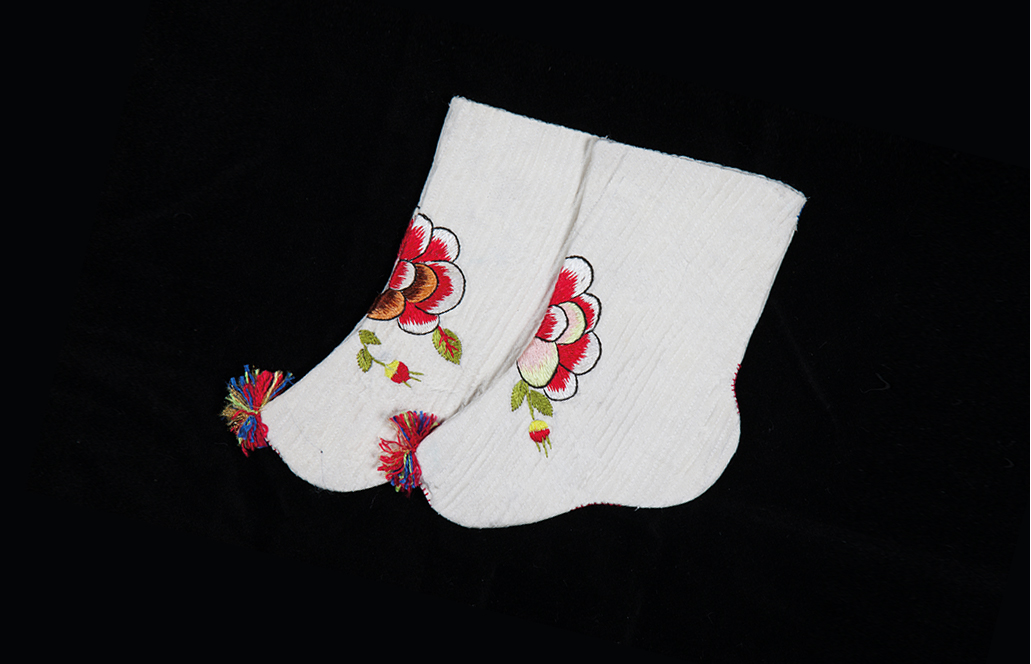
Contents










Design · Written by Lee Eun-yi, designer & writer
Beoseon
Simple yet Graceful Curves
The top-selling souvenir in Korea among Japanese tourists is yosul beoseon, which literally means
“magic socks,” according to a recent survey by the Korea Tourism Organization. Usually worn by older Korean women,
these artistic socks enhance traditional beoseon by adding eye-catching colors and patterns as well as
extra padding for warmth. Offering a variety of designs while keeping out the cold, yosul beoseon have regained
interest from both the younger and older generations. Formerly a superstitious
set thought to bring luck and drive away evil, they are aptly nicknamed “magic socks.”

This tarae beoseon was made to keep the feet warm after the Korea’s independence. © National Folk Museum of Korea
Beoseon dates back to ancient times on the Korean Peninsula. “History of the Three Kingdoms” said the socks had been used during the Three Kingdoms period after they evolved into their current form from the previous incantation of simply being cloth used to wrap up feet. Beoseon was commonly made with white cotton, while royalty used silk. After the Joseon Dynasty initiated foreign trade in the late 19th century, modern socks replaced beoseon, whose use was then limited in the modern era to national holidays or weddings paired with hanbok (traditional Korean attire).
Despite the simple design of a curve resembling a foot, beoseon sported distinctive types. The socks could be filled with or without cotton or feature one layer. Quilted beoseon featured patterns and cotton inside, tarae and flower beoseon catered to children, gilmok beoseon was used on long trips and oessi beoseon, which was made in the late Joseon era, had sharp lines like cucumber seeds to accentuate the shapes of feet. People from the central region spanning Seoul preferred straight-lined beoseon with a pinched bottom tip, while those from the southern and northern provinces preferred diagonal-lined varieties.

Traditional Uses
Besides its main function to protect the feet, beoseon also served as a lucky charm. Housewives had sketches of their family members’ feet and made beoseon for each of them. Afterward, the sketches were collected in a pouch decorated with patterns of chrysanthemum, peony and other flowers believed to bring luck, wealth and long life. Once a daughter moved out of her family’s home, she would bring the pouch with her and make a pair of beoseon for her parents. Under a tradition called dongjiheonmal, a daughter-in-law made beoseon for her husband’s family at the start of winter to wish for longevity and fertility. Women also crafted a beautiful pair of beoseon to send to loved ones. Putting beoseon with gold chains on earthware pots was also seen as a way to cast away evil spirits.
Beoseon has also inspired numerous artists. Artist and beoseon aficionado Je Jung-ha has used the socks to express the joys and sorrows of a mother’s life, traditional Korean sentiment and aesthetics. Choe Seo-yon infuses Korean identity and beauty in beoseon-shaped ceramics. In “The Dance of the Buddhist Nun,” poet Cho Ji-hoon describes the dancer’s movement to oessi beoseon’s sharp lines and curves, writing, “…her stocking foot, slim as a cucumber seed, lightly blends and is lifted, as if to fly as she turns.” Another poet, Kim Jong-tae, also lauded beoseon’s aesthetics in his poem “Longing for the Old,” with one line saying, “Korean women embraced in their feet geometric curves that no equation can ever create.”
Thus timeless appeal, nostalgia and practicality have combined to reignite interest in beoseon in modern Korea.
 The children’s beoseon, a total length of 12.5 cm, is decorated with dogs, chicks, and rabbits. © Kyungwoon Museum
The children’s beoseon, a total length of 12.5 cm, is decorated with dogs, chicks, and rabbits. © Kyungwoon Museum Tarae beoseon was showcased in 2007 at the exhibition “Korean Traditional Crafts: Pursuit of Harmony” at the UN headquarters in the New York City. © National Folk Museum of Korea
Tarae beoseon was showcased in 2007 at the exhibition “Korean Traditional Crafts: Pursuit of Harmony” at the UN headquarters in the New York City. © National Folk Museum of KoreaOther Articles















